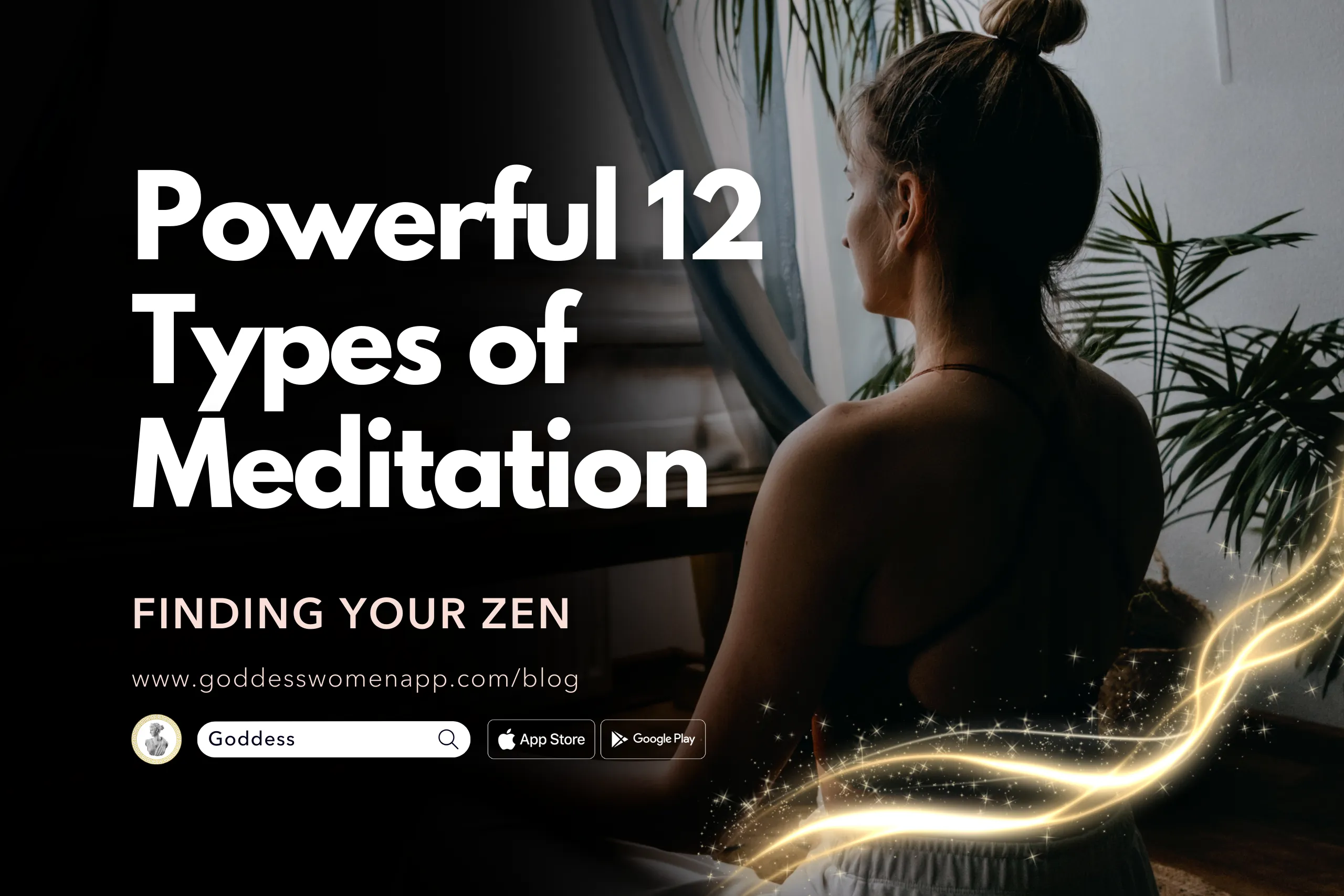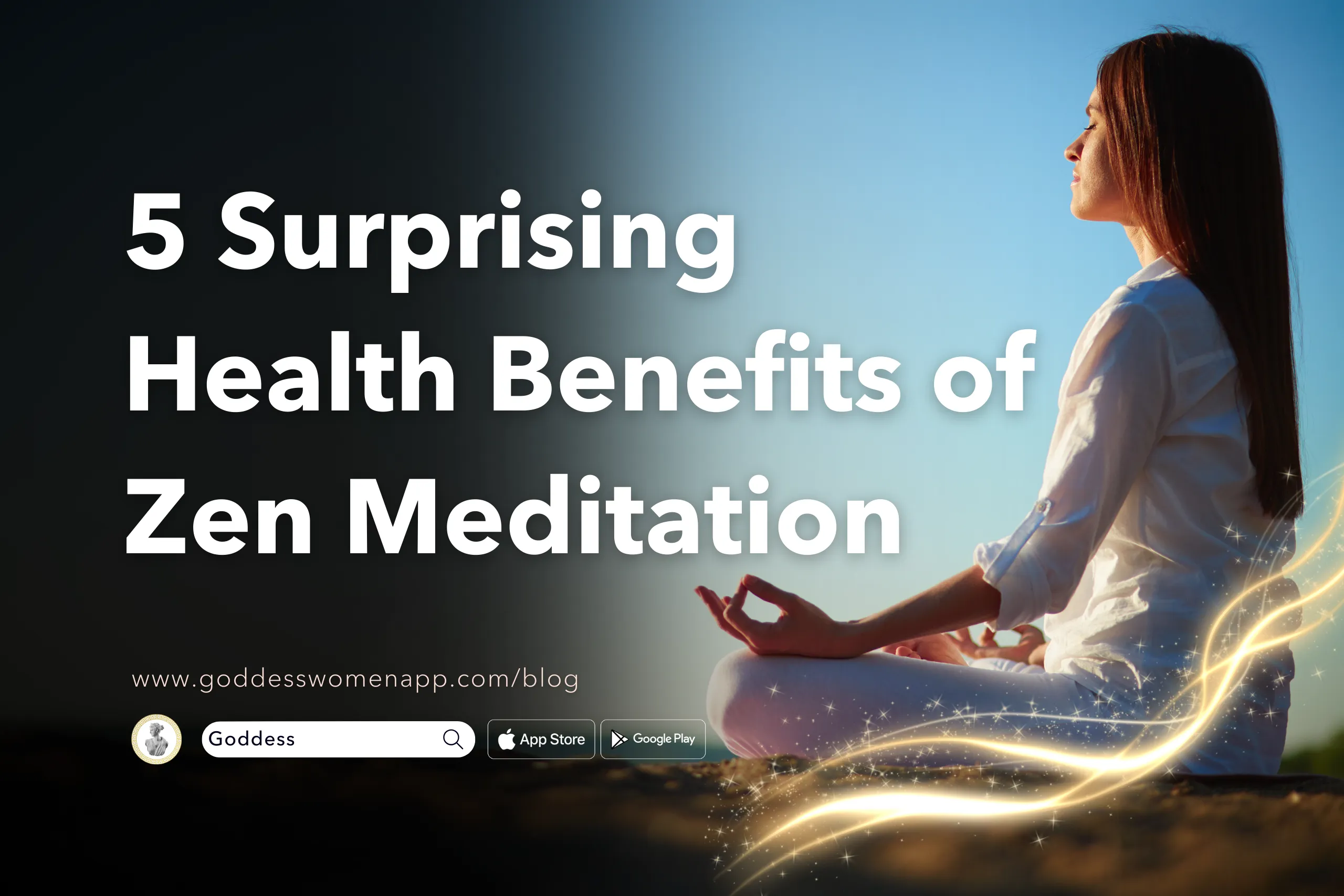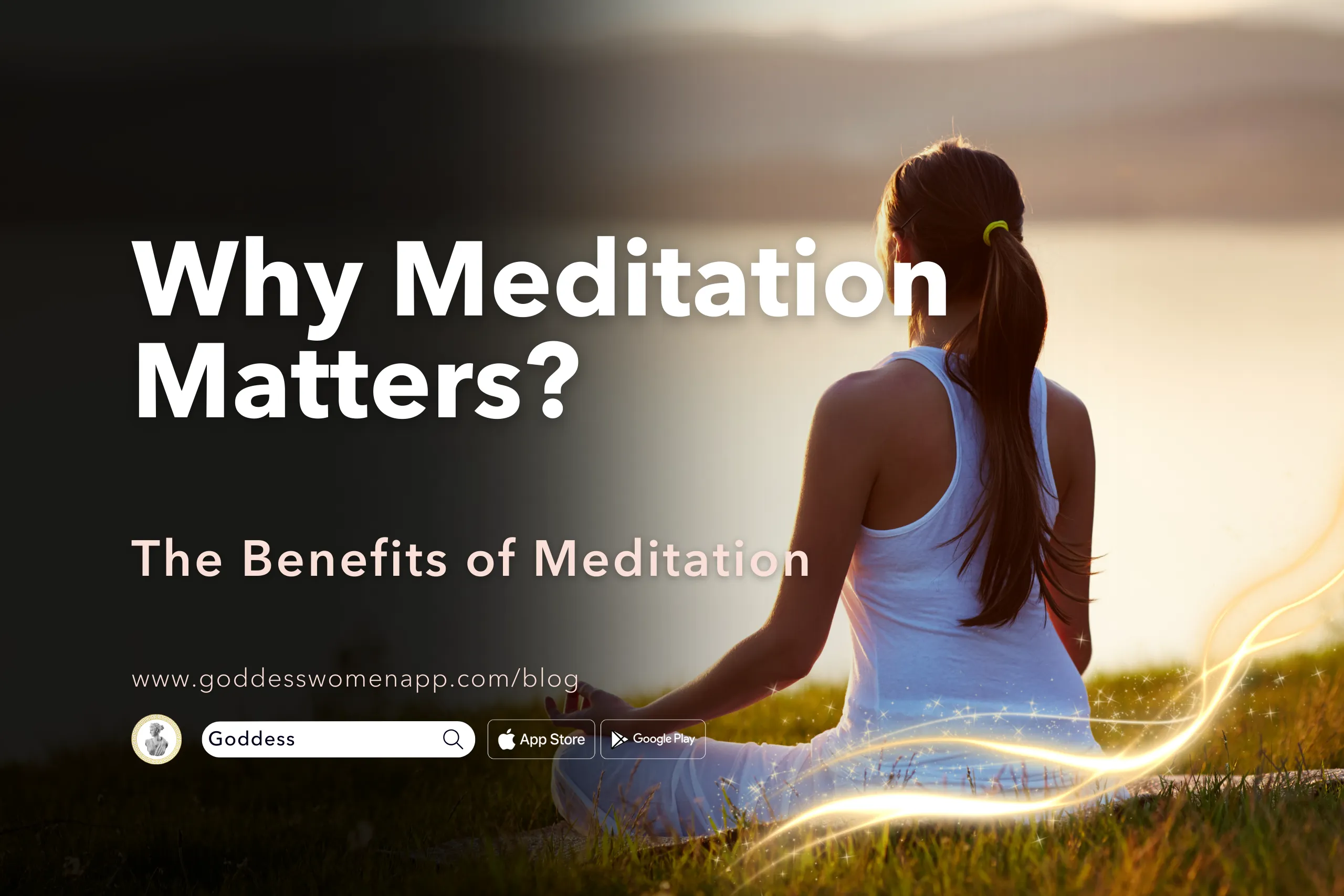Table of Contents
In our fast-paced world, finding a moment of peace can be a challenge. Meditation offers a respite, a quiet corner in our busy lives where we can retreat to find balance and inner serenity. Among the many practices, there are “12 types of meditation,” each with its unique approach and benefits. Whether you’re a beginner seeking a starting point or an experienced meditator looking to deepen your practice, exploring these 12 types of meditation can be a transformative journey. From the focused stillness of Mindfulness Meditation to the rhythmic chants of Mantra Meditation, there’s a style for everyone. In this guide, we’ll explore each type, offering insights into how they can enhance your mental clarity, emotional stability, and overall well-being.
The Benefits of 12 Types of Meditation
Before delving into the various types of meditation, let’s understand why meditation is so beneficial. This ancient practice, rooted in various cultures and traditions, has stood the test of time, not just as a spiritual exercise but also as a practical tool for improving mental and physical health.
Meditation is known to reduce stress, anxiety, and depression. It fosters a sense of calm and helps individuals develop a heightened awareness of their thoughts and emotions. Regular meditation can improve focus, increase creativity, and enhance cognitive abilities. Physically, it can lower blood pressure, improve sleep, and boost overall immune system function.
But the benefits of meditation are not one-size-fits-all; they can vary significantly depending on the type of meditation you practice. That’s why exploring the “12 types of meditation” is crucial in finding the one that aligns with your personal goals and preferences.

1. 12 Types of Meditation: Mindfulness Meditation
Mindfulness Meditation is perhaps the most widely recognized form of meditation in the Western world, owing much of its popularity to its simplicity and applicability in everyday life.
1.1 Description and Benefits
At its core, Mindfulness Meditation is about being present in the moment. It involves paying attention to your thoughts, feelings, and sensations in a non-judgmental way. This practice encourages awareness of the self and one’s surroundings without being overly reactive or overwhelmed by what’s happening around.
The benefits of Mindfulness Meditation are extensive. It helps in reducing stress, enhancing emotional regulation, and increasing self-awareness. Practitioners often report better focus and concentration, and studies have shown that regular mindfulness practice can alter the brain’s structure, leading to improved cognitive functions.
1.2 How to Practice
To practice Mindfulness Meditation, find a quiet and comfortable place to sit or lie down. Close your eyes and focus on your breath, noticing the sensation of air entering and leaving your body. As your mind begins to wander, gently acknowledge your thoughts or distractions and then return your focus to your breathing. The key is not to judge or engage with your thoughts but simply to be aware of them as they pass.
Start with short sessions, maybe five minutes a day, and gradually increase the duration as you get more comfortable with the practice. Remember, the goal is not to clear your mind of thoughts, but to observe them with a sense of detachment and calmness.
2. 12 Types of Meditation: Transcendental Meditation
Transcendental Meditation, or TM, is a form of meditation that involves the use of a mantra and is practiced for 15–20 minutes twice per day while sitting comfortably with the eyes closed.
2.1 Description and Benefits
Originating from India, Transcendental Meditation is a simple yet profound technique that allows the mind to naturally settle inward, beyond thought, to experience pure awareness, also known as transcendental consciousness. This state of restful alertness is said to be a source of revitalized energy and clarity.
The benefits of TM are far-reaching. Research indicates that regular practice can reduce stress and anxiety, improve heart health, and enhance brain function. Many practitioners also report higher levels of self-esteem and an overall improvement in the quality of life.
2.2 How to Practice
Transcendental Meditation is typically taught by a certified instructor. The process starts with a short course that includes personal instruction and a series of group sessions for practice and discussion. The unique mantra given is to be silently repeated during the meditation sessions, allowing the individual’s awareness to dive inward, transcending thought and reaching a state of pure consciousness.
3. 12 Types of Meditation: Guided Meditation
Guided Meditation, also known as guided imagery or visualization, is a method of meditation in which you form mental images of places or situations you find relaxing.
3.1 Description and Benefits
This technique is often led by a guide or teacher, hence the name. The idea is to use as many senses as possible, such as smells, sights, sounds, and textures, to evoke calmness in your meditative state. Guided Meditation is particularly beneficial for those who require more structure in their meditation practice or are just beginning to meditate.
It’s an effective way to reduce stress and induce a state of deep relaxation. Moreover, it can help improve focus, foster creativity, and elevate mood, making it a favored choice for improving mental well-being.
3.2 How to Practice
To practice Guided Meditation, you may attend a class, use a video, or listen to an audio recording. The guide will lead you through a series of relaxing visualizations designed to engage your mind and eliminate the stream of jumbled thoughts that may be crowding your mind and causing stress. Following the guide’s voice, you’ll be led through a series of calming scenarios, making it an easily accessible form of meditation for beginners.

4. 12 Types of Meditation: Vipassana Meditation (Insight Meditation)
Vipassana, which means to see things as they really are, is one of India’s most ancient techniques of meditation and one of the 12 types of meditation. It’s often referred to as Insight Meditation because it aims at cultivating insight into the true nature of reality.
4.1 Description and Benefits
Vipassana Meditation is a form of mindfulness meditation that encourages practitioners to observe their thoughts and emotions without attachment. The practice involves close attention to physical sensations, which helps to connect the mind and body and bring about self-awareness and understanding of the impermanence of all things.
The benefits of Vipassana include improved mental clarity, enhanced emotional intelligence, and a better understanding of the self and the world. It is also known to help in relieving stress, anxiety, and depression, promoting a state of peace and balance within.
4.2 How to Practice
Vipassana Meditation requires patience and dedication. It is usually practiced by sitting in a quiet place and observing the body’s sensations, thoughts, and emotions without judgment. The practice emphasizes staying present and being fully aware of the current moment. Traditionally, it’s recommended to learn Vipassana through a 10-day residential course to fully understand and experience the technique, although shorter sessions can also be beneficial.
5. 12 Types of Meditation: Loving-Kindness Meditation (Metta Meditation)
Loving-Kindness Meditation, known as Metta Meditation, is a practice of cultivating compassion and love for oneself and others.
5.1 Description and Benefits
One of the 12 types of meditation, this meditation type involves silently repeating phrases that express goodwill and kindness towards oneself and others. The traditional phrases include wishes for safety, happiness, health, and ease of well-being. This practice helps in breaking down barriers to compassion, fostering a sense of connectedness, and developing an attitude of loving-kindness towards all beings.
The benefits of Loving-Kindness Meditation are profound. Regular practice can increase feelings of compassion and empathy, reduce negative emotions like anger and resentment, and promote a sense of inner peace. Studies have shown that it can also have a positive impact on emotional processing in the brain, leading to increased positive emotions and psychological well-being.
5.2 How to Practice
To practice Loving-Kindness Meditation, begin by finding a comfortable and quiet space. Close your eyes and focus on your breath for a few moments to center yourself. Then, silently repeat phrases of loving-kindness towards yourself, such as “May I be happy, may I be healthy, may I live with ease.” After directing kindness to yourself, extend these wishes to others, starting from loved ones to neutral individuals, and eventually to those with whom you may have conflict. The key is to genuinely wish for the happiness and well-being of each person, including yourself.

6. 12 Types of Meditation: Chakra Meditation
Chakra Meditation involves focusing on the different energy centers in the body, known as chakras, to promote balance and healing.
6.1 Description and Benefits
In this type of meditation from the “12 types of meditation,” practitioners focus on the seven main chakras, each corresponding to specific physical, emotional, and spiritual aspects. The practice often includes visualizing the color and energy of each chakra, chanting mantras, and sometimes incorporating hand positions (mudras) or yoga postures.
Chakra Meditation is beneficial for aligning and balancing the body’s energy centers. It’s believed to enhance physical well-being, promote emotional stability, and facilitate a deeper spiritual connection. This form of meditation can be particularly helpful for those seeking to address specific issues related to the different chakras, such as communication problems, lack of confidence, or emotional blockages.
6.2 How to Practice
Begin by sitting or lying in a comfortable position. Close your eyes and take deep, slow breaths. Start at the root chakra at the base of the spine, and visualize a vibrant red color, focusing on feelings of stability and security. Gradually move your attention up through each chakra, visualizing the corresponding color and focusing on the qualities each chakra represents. You may use specific mantras or simply concentrate on the energy and color of each chakra. The practice concludes at the crown chakra, symbolizing spiritual connection and enlightenment.
7. 12 Types of Meditation: Yoga Meditation
Yoga Meditation is an integral part of the broader practice of Yoga, emphasizing the union of mind, body, and spirit.
7.1 Description and Benefits
Yoga Meditation, one of the “12 types of meditation,” combines meditative practices with physical postures (asanas) and breathing techniques (pranayama). This holistic approach seeks not only physical flexibility and strength but also mental clarity and emotional balance. The meditation aspect of yoga often includes mindfulness, concentration on breath, or the chanting of mantras, helping to bring about a state of inner peace and self-awareness.
The benefits of Yoga Meditation are extensive, encompassing physical, mental, and spiritual well-being. Physically, it enhances flexibility, strength, and stamina. Mentally, it fosters focus, reduces stress, and promotes mental clarity. Spiritually, it can lead to a deeper sense of connection with oneself and the broader universe.
7.2 How to Practice
To engage in Yoga Meditation, start with simple yoga postures to prepare the body. Focus on your breath, and try to sync your movements with your breathing. After a series of postures, sit or lie in a comfortable position for meditation. You may focus on your breath, chant a mantra, or practice mindfulness, observing your thoughts and sensations without judgment. Conclude your session with a period of relaxation, allowing the benefits of the practice to integrate into your body and mind.
8. 12 Types of Meditation: Zen Meditation (Zazen)
Zen Meditation, or Zazen, is a central practice in Zen Buddhism, emphasizing seated meditation.
8.1 Description and Benefits
One of the 12 types of meditation, Zazen is often regarded as the heart of Zen practice. It involves sitting in a specific posture and focusing on the breath, allowing thoughts and emotions to pass without engagement. This type of meditation from the “12 types of meditation” array is not about achieving a mental state but rather about letting go of judgment and attachment to thoughts.
The benefits of Zazen are profound, including increased mindfulness, better emotional regulation, and a deeper understanding of the self. Practitioners often experience a sense of inner peace and clarity, as well as an improved ability to cope with stress and anxiety.
8.2 How to Practice
To practice Zen Meditation, sit on a cushion or chair with your back straight. The hands are typically placed in a specific mudra on the lap. Focus on your breath, counting each exhale up to ten and then starting over. If thoughts intrude, acknowledge them and then gently return your focus to your breath. Zazen can be practiced for periods as short as 10 minutes or as long as several hours.

9. 12 Types of Meditation: Mantra Meditation
Mantra Meditation involves the repetition of a sacred word or phrase and is a common practice in various spiritual traditions.
9.1 Description and Benefits
In this type of meditation from the “12 types of meditation” list, the practitioner repeats a mantra—a word, sound, or phrase—either silently or aloud. This repetition helps the mind focus and enter a deeper state of meditation. Common mantras include traditional Sanskrit phrases, but they can also be words or phrases in any language that hold personal significance.
The benefits of Mantra Meditation include reduced stress and anxiety, improved concentration, and a greater sense of calm and well-being. The repetitive nature of the practice can have a soothing effect, helping to quiet the mind and deepen the meditation experience.
9.2 How to Practice
Choose a mantra that resonates with you. Find a comfortable and quiet place to sit. Close your eyes, relax your body, and start repeating your mantra silently or aloud. Focus solely on the sound and vibration of the mantra, letting go of other thoughts. You can set a specific time for your practice or continue for a certain number of repetitions.
10. 12 Types of Meditation: Taoist Meditation
Taoist Meditation, rooted in Taoist philosophy and Chinese Buddhism, emphasizes living in harmony with the Tao, or the fundamental nature of the universe.
10.1 Description and Benefits
Taoist Meditation techniques include concentration, mindfulness, contemplation, and visualization. This variety within the “12 types of meditation” focuses on the cultivation of balance and harmony, aligning oneself with the Tao. Practices may involve focusing on the breath, observing bodily sensations, and cultivating a sense of oneness with the environment.
The benefits are holistic, improving physical health, mental clarity, and spiritual well-being. Practitioners often report enhanced emotional balance, a deeper sense of inner peace, and a greater connection with the world around them.
10.2 How to Practice
To practice Taoist Meditation, begin by sitting comfortably and focusing on your breath. Inhale deeply and exhale slowly, concentrating on the flow of air and the sensations in your body. You may incorporate visualization or focus on specific parts of the body, such as the dantian (an energy center below the navel), to deepen your meditation. The goal is to achieve a state of tranquility and harmony with the Tao.
11.1 Description and Benefits
Christian Meditation, a part of the “12 types of meditation,” focuses on growing a deeper understanding of God’s word and presence. It often involves reading scriptures (lectio divina), contemplating (meditatio), prayer (oratio), and silence (contemplatio). This meditative practice is about connecting with God and understanding His teachings at a deeper level.
The benefits include a strengthened spiritual connection, increased peace of mind, and greater compassion and empathy towards others. It also aids in coping with stress and anxiety, providing a sense of calm and balance in practitioners’ lives.
11.2 How to Practice
To practice Christian Meditation, find a quiet place and begin with prayer to set the intention for your meditation. You can then read a passage from the Bible, reflect on its meaning, and connect it to your life. During meditation, focus on your breath or repeat a significant word or phrase from the scripture. Conclude with a prayer, thanking God for His guidance and presence.
/
12. 12 Types of Meditation: Buddhist Meditation
Buddhist Meditation encompasses a variety of meditation techniques that develop mindfulness, concentration, tranquility, and insight.
12.1 Description and Benefits
As one of the “12 types of meditation,” Buddhist Meditation is integral to the practice of Buddhism. It includes various forms such as Mindfulness Meditation, Loving-Kindness Meditation, and Vipassana, all aimed at cultivating a deep understanding of life’s transient nature and achieving spiritual enlightenment.
The benefits of Buddhist Meditation are extensive. It enhances mental clarity and focus, reduces stress and anxiety, and promotes a deep sense of peace and well-being. Regular practitioners often experience increased compassion and empathy, as well as a heightened state of awareness and mindfulness.
12.2 How to Practice
Begin by finding a quiet space where you can sit comfortably. Focus on your breath, or choose a specific meditation practice like mindfulness or loving-kindness. In mindfulness, pay attention to your thoughts, sensations, and feelings without judgment. In loving-kindness, silently repeat phrases of goodwill and compassion towards yourself and others. Consistency is key in Buddhist Meditation, as it deepens the practice and its benefits.
Conclusion
Exploring the “12 types of meditation” reveals a rich tapestry of practices, each offering unique pathways to inner peace, mindfulness, and spiritual growth. From the focused stillness of Zen Meditation to the compassionate resonance of Loving-Kindness Meditation, these varied techniques provide a wealth of options to suit individual needs and preferences. Whether you seek stress relief, spiritual deepening, or simply a moment of quiet in a busy day, there is a meditation style in this list for you. Embrace the journey of exploring these “12 types of meditation” and discover the transformative power of this ancient practice in your life.
You can find many of these 12 types of meditation in the Goddess App, download it from the link below and start your journey of exploring 12 types of meditation.





